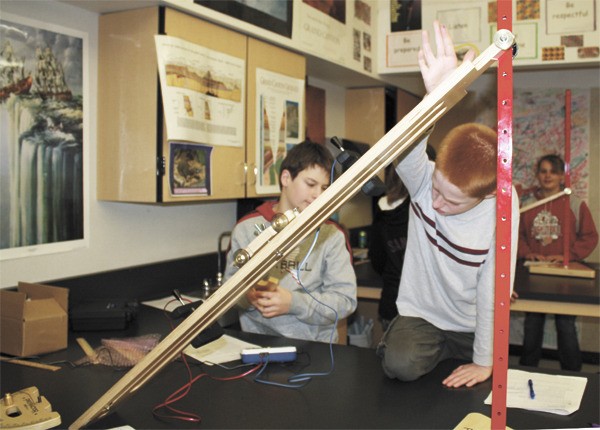The car didn’t fit under the gate, and understanding why was part of the lesson for a group in Dave Cruz’s science classroom at Snoqualmie Middle School.
“Look, they got it upside down, but they’re figuring it out,” Cruz whispered, as the boys flipped the gate and re-attached it. Right-side up, the gate was high enough for the car to roll under and the experiment continued.
At the next table, a boy puzzled over a flat piece of wood with a tab. His ramp and gates were assembled, with this piece left over.
After a quick look around the room, he said. “Oh, that’s a good idea!” and slid the tab into a slot at the bottom of the ramp.
It was a lab day in seventh-grade science, and students were racing cars down various ramps and measuring their speed between gates. They measured slope, consulted, and got immersed in the scientific process.
“Which did you hypothesize would be the fastest?” Cruz asked the group.
The tallest one, of course, but the students had to use the proper language to put forth their theories, describe how they tested them, and analyze the results. It was no problem for Kris Gordon, who summed it up: the steeper the slope, the faster the speed.
Some students conducted other, less scientific studies during the project. Telsey Wright fastened a tiny teddy bear, Lofa, to her team’s car for a ride down the ramp, and at the far end of the room, Kaylina Blankmeyer discovered margin of error.
“Sometimes it just goes slower than other times,” she said.
Students have much more to explore in the force and motion curriculum kit that Cruz acquired in December. There is a roller-coaster track for testing speed and inertia, and a ropes-and-pulleys system for studying applied force.
Cruz was thrilled to receive this curriculum kit, which he could afford only because he received a $5,500 grant from the Snoqualmie Valley Schools Foundation.
The Foundation has funded 14 programs in the district this year.



